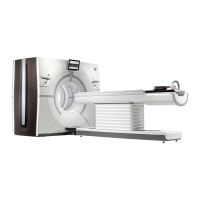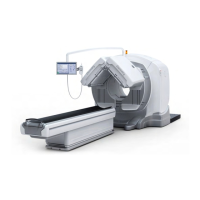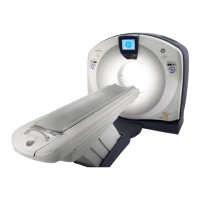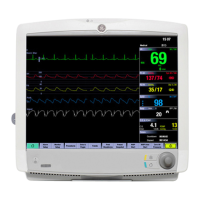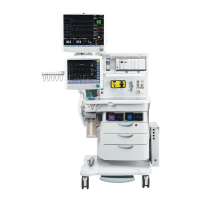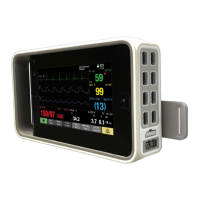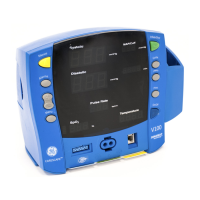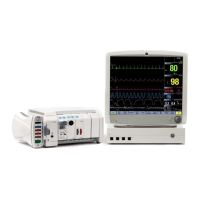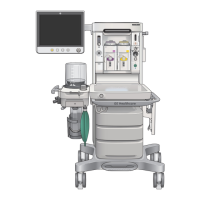GENERAL ELECTRIC MEDICAL SYSTEMS
Direction 18000
CT 9800 QUICK SYSTEM
Rev. 22
6–9A–16
NOTE: Some detectors may be slightly warped as
evidenced by space between the adjoining legs of
the rotational alignment tool. If this occurs, switch
the legs of the tool.
ILLUSTRATION 6–9A–11
ROTATIONAL ALIGNMENT TOOL
Enter option 7 (Centroid). Edit the next menu to relect the following:
Cal file name is the same as the ISO cal file used above. Static search. First channel to search is 373. Number
of channels either side to include is 10.
Just (RETURN) until a plot appears (which you can ignore). Now, enter [I] to get the file information. You are
interested in the Average Centroid value which is reported on the A/N CRT – record this value.
There are two types of detectors in the field. The newer style is identified by the 1/4” screw head (next to the lifting
hole in the center mounting tab) which is flush–mounted. The spec for both styles of detector is 376.4 + 2.
6) If your system is within one of these two sets of limits, no adjustment is necessary. Continue with ISO center
(section 9A–8). If outside of the limits, the detector will have to be rotated. At this point, calculate the motion
required to reach the channel you are aiming for.
There are two types of detectors in the field. The newer style detector is identified by the 1/4’ screw head (next to
the lifting hole in the center mounting tab) which is flush–mounted. The spec for the newer style detector is 376.4 +
2. On channels with the older detectors, you may not get the preferred 374.4 + 2 channels. Therefore, use the
spec of 371.10 + 2 channels.
Calculate motion required:
· If 376.4 : motion = |376.4 – average centroid | X 0.0244”
If this procedure and the math are done properly, the required motion will always be less than 0.120”.
Remember: Rotating the detector clockwise moves the pin to a lower channel number. Rotating the detector
counter–clockwise moves the pin to a higher channel.
Since this may be confusing, let’s look at an example:
Average centroid of the pin scan = 374.700
motion = |376.4 – 374.700 | X 0.0244 = 0.041”
Since we wish to move the pin projection to a higher channel, we must move the detector adjustment cam so that
the detector moves 0.041” CCW.
End of example.
* NOTE: If you have an old detector and cannot obtain the preferred spec (376.4 + 2 channels), then calculate the
motion as follows:
If 371.1 : motion =|371.1 – average centroid | X .0244”

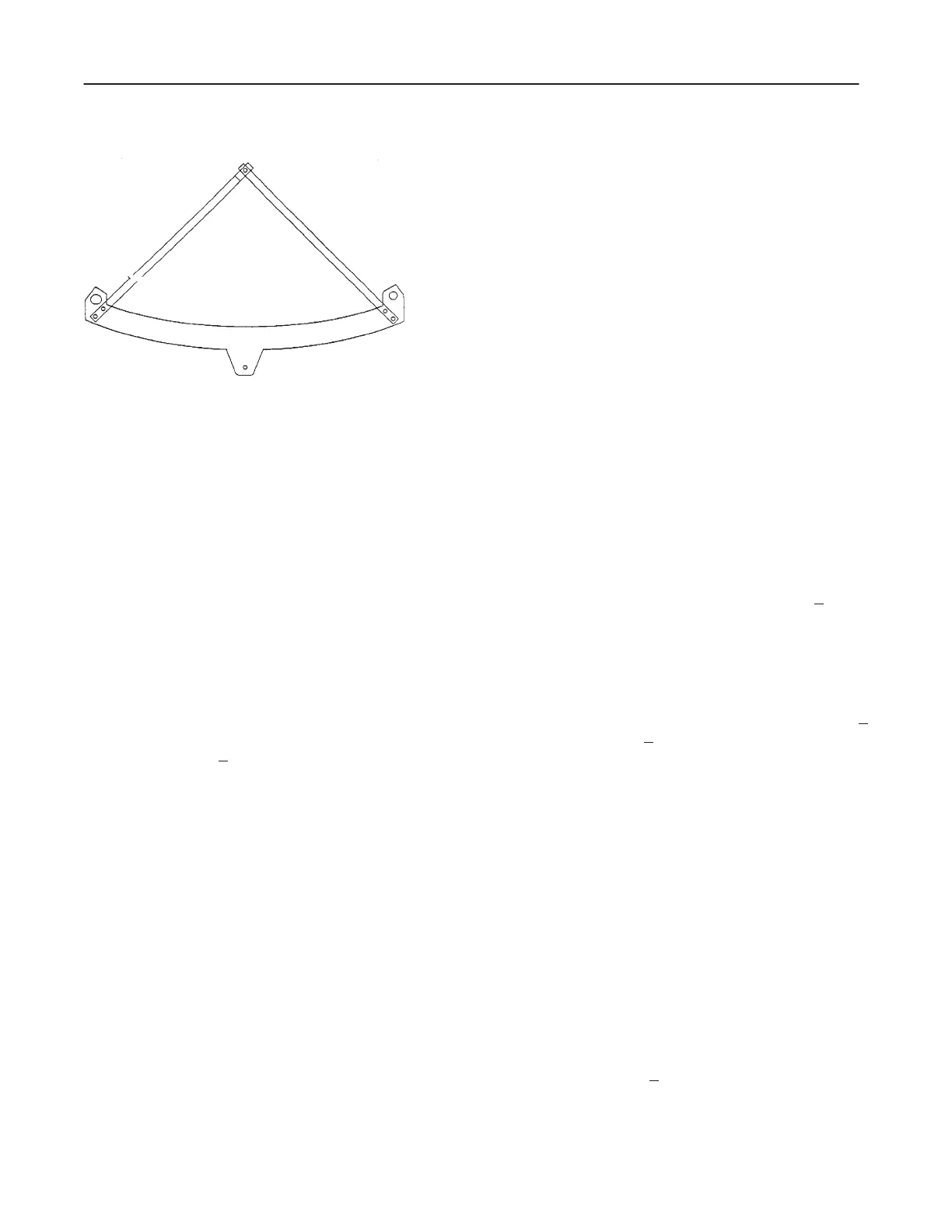